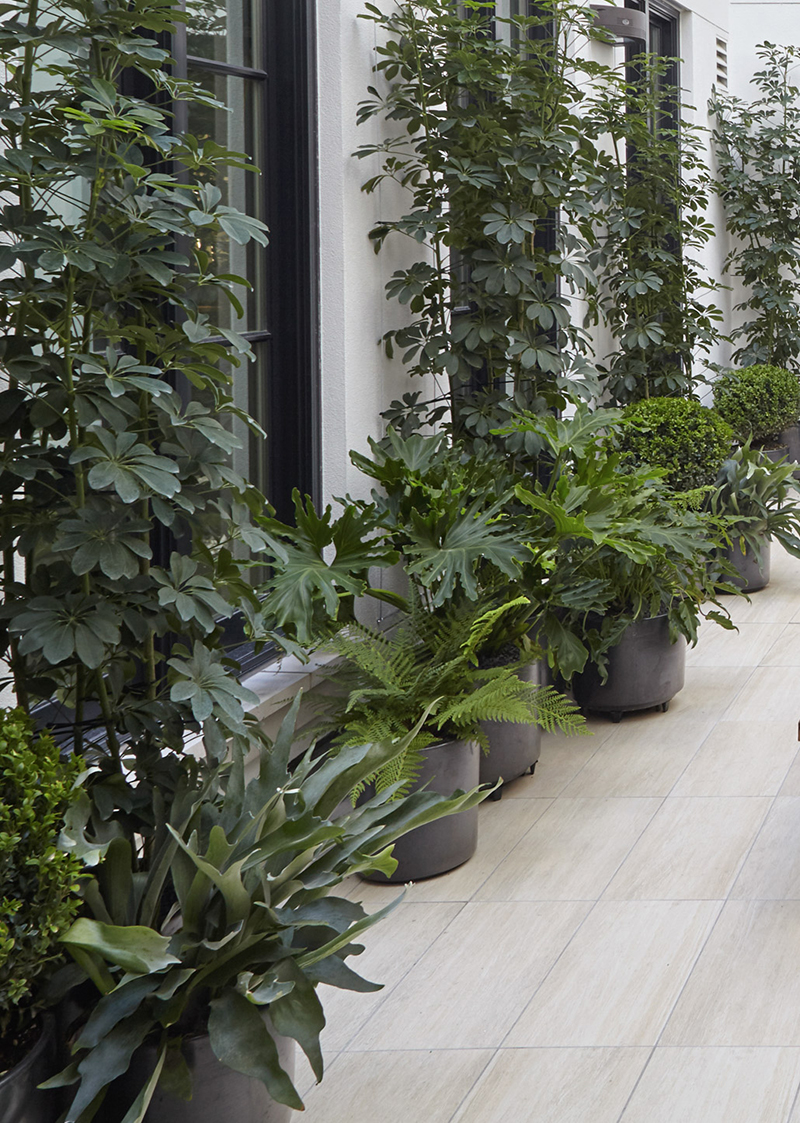Schefflera arboricola
umbrella plant
Bushy, tough, tropical looking shrub responds well to pruning if it ever gets too large for the space. Fast growing.


 |
height |
6–20 |
 |
width |
6–20ft |
 |
tolerates |
Cool Summers, Pots |
 |
water
needs |
Moderate |
 |
water
info |
This plant wants water when the top of the soil is dry, but you can still feel moisture just below the surface. This plant will often fall into a once-a-week watering cycle, but remember that your watering should be based on the moisture left in the soil, which will depend partly on the moisture in the room and the weather outside. The soil surface goes a bit deeper for larger pots; for example, a plant in a 14-inch diameter pot should dry out a couple of inches deep before you water it, while a plant in a 4-inch pot will only want to dry out in the top half inch or so of soil. |
 |
hardy
to |
28F |
 |
exposure |
Full Shade – Part Shade |
 |
indoor
outdoor |
In or Out |
 |
drainage |
In Ground: Planting Mix, In Pots: Potting Soil |
 |
fertilizing |
All Purpose |
 |
origin |
Taiwan |
 |
california
native |
No |
 |
sunset
zones |
8, 9, 13–24 |
SUNSET ZONES MAP

Growing Notes
Typically has an upright mildly sprawling form. You can tip pinch by pinching off the very tip of the stem of the plant, which will cause a bushier plant over time. This is best started early if a bushy plant is desired. If the umbrella plant ever gets too tall it responds well to a hard pruning to reset its center of gravity lower. This often leads to a bushier form as well.
More Info
This plant has been grown as a houseplant, but it also excels outdoors in mild climates. See Sunset zones if you are interested in growing this plant outside. Also note that anytime a houseplant is moved outside, some transitional stresses should be expected, including burning (when a plant that can and in fact would often prefer to grow in direct sunlight has not been cultivated in direct sun) and also drooping or leaf drop (usually associated with a shift in temperature). Planting outdoors during mild weather will help negate these effects, and if the plant is properly cared for, it should rebound with new acclimated growth.



